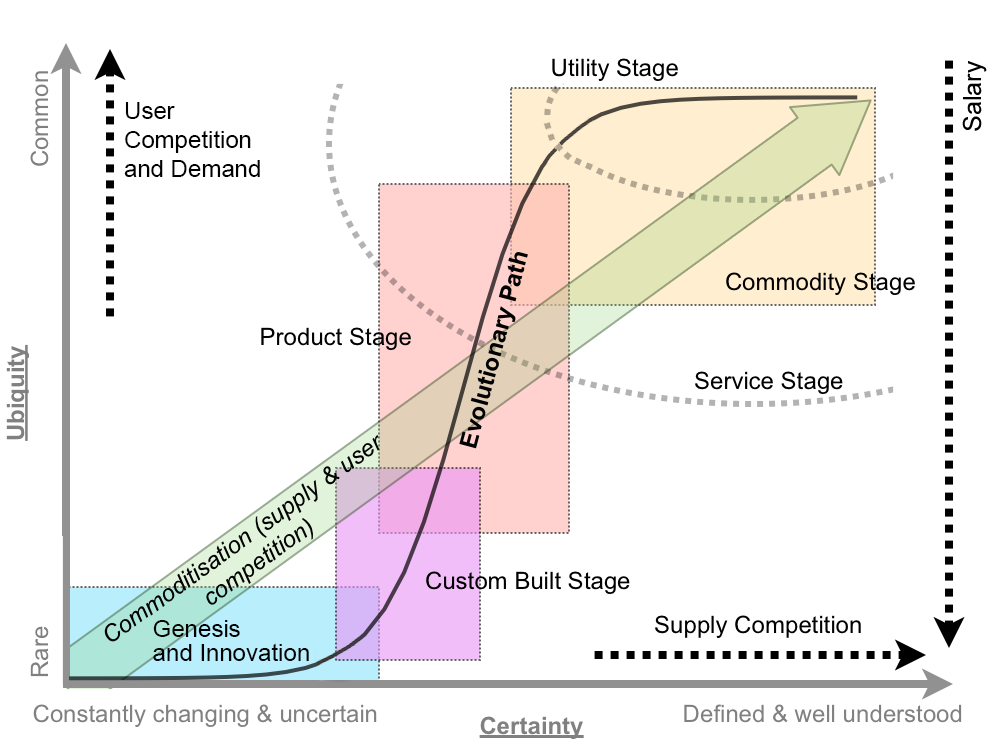Views : 849





3Dprinting (179) A.I. (900) animation (353) blender (217) colour (241) commercials (53) composition (154) cool (368) design (657) Featured (91) hardware (317) IOS (109) jokes (140) lighting (300) modeling (156) music (189) photogrammetry (197) photography (757) production (1308) python (101) quotes (498) reference (317) software (1379) trailers (308) ves (573) VR (221)
POPULAR SEARCHES unreal | pipeline | virtual production | free | learn | photoshop | 360 | macro | google | nvidia | resolution | open source | hdri | real-time | photography basics | nuke
Year: 2019
-
DNeg possibly charged with fraud
An Oscar-winning visual effects studio aiming for a £600 million stock market flotation has become entangled in an alleged scheme to defraud the taxman.
DNEG, which has worked on films such as No Time to Die and Captain Marvel, could have to pay HM Revenue & Customs more than £10 million in back taxes and penalties.
https://www.thetimes.co.uk/article/visual-effects-studio-reveals-tax-raid-vjb3pj8s3
-
Capturing the world in HDR for real time projects – Call of Duty: Advanced Warfare
Real-World Measurements for Call of Duty: Advanced Warfare
www.activision.com/cdn/research/Real_World_Measurements_for_Call_of_Duty_Advanced_Warfare.pdf
Local version
Real_World_Measurements_for_Call_of_Duty_Advanced_Warfare.pdf
-
Polarised vs unpolarized filtering
A light wave that is vibrating in more than one plane is referred to as unpolarized light. …
Polarized light waves are light waves in which the vibrations occur in a single plane. The process of transforming unpolarized light into polarized light is known as polarization.

en.wikipedia.org/wiki/Polarizing_filter_(photography)
The most common use of polarized technology is to reduce lighting complexity on the subject.
(more…)
Details such as glare and hard edges are not removed, but greatly reduced. -
Is stress good or bad? It’s actually both…
www.bbc.com/worklife/article/20191212-is-stress-good-or-bad-its-both
Can stress really help you do better and if so, how much is the right amount?
Ultimately stress is a way for your body and mind to communicate impending needs or events which require attention. Once you have recognized and acknowledged the message, there should not be any need to… stress over it.“…having some stress helps my decision-making, because it helps to maintain a focus on the situation,”
“…Too much stress causes what we call cognitive overload and then impairs your ability to make decisions because you’ve lost that situational awareness,”
“…stress is really importantly implicated in performance and in health,” “It’s very helpful for legitimate emergencies, and to achieve peak achievement in high-performance events.”
“…in physiological terms, (stress) arousal might take the form of an increased heart rate, redirected blood flow to the brain and large muscle groups, and release of glucose to act as fuel. The body’s resources are reallocated to be most useful for an emergency, from greater mental alertness to higher muscle tension. The brain and body are essentially bracing themselves.”
“While the Yerkes-Dodson principle appears to resonate with many, there has been plenty of criticism of it too. Detractors suggest it is applied too broadly. For instance, some people may be galvanised by pressure because they’re “defensive pessimists” who perform better when they worry a bit. Others find positive reinforcement more motivating. Sleep deprivation might harm speed, but not accuracy (so a sprinter shouldn’t stay out late every night). Noise might hurt accuracy, but not speed (so a reporter should try to find a quiet space).”
“…any stress can cause (extreme) harm when it’s prolonged. To take just one example, a chronically high heart rate is linked to cardiovascular risk.”
“One key factor is to avoid, where possible, the tipping point when stress leads to burnout. Burnout, with its physical and mental harms, is especially likely when stress is chronic. ”
“Another factor is the presence of control. For those who feel powerless over their situation, stress is unlikely to be beneficial.”
“Studies show that acute, uncontrollable stress limits the functions managed by the prefrontal cortex, which is responsible for working memory. So the test-takers should try not to deplete their precious working memory by worrying, and the athletes should focus on outcomes (e.g. where the ball should be going) rather than on their bodies.”
“When it comes to stress and how it affects your performance, it’s helpful to recognise the variations in personality, type of stress and task that affect where you sit on the bell curve, as well as understanding tools you can use to control or harness that stress.”
-
Capturing textures albedo
Building a Portable PBR Texture Scanner by Stephane Lb
http://rtgfx.com/pbr-texture-scanner/How To Split Specular And Diffuse In Real Images, by John Hable
http://filmicworlds.com/blog/how-to-split-specular-and-diffuse-in-real-images/Capturing albedo using a Spectralon
https://www.activision.com/cdn/research/Real_World_Measurements_for_Call_of_Duty_Advanced_Warfare.pdfReal_World_Measurements_for_Call_of_Duty_Advanced_Warfare.pdf
Spectralon is a teflon-based pressed powderthat comes closest to being a pure Lambertian diffuse material that reflects 100% of all light. If we take an HDR photograph of the Spectralon alongside the material to be measured, we can derive thediffuse albedo of that material.
The process to capture diffuse reflectance is very similar to the one outlined by Hable.
1. We put a linear polarizing filter in front of the camera lens and a second linear polarizing filterin front of a modeling light or a flash such that the two filters are oriented perpendicular to eachother, i.e. cross polarized.
2. We place Spectralon close to and parallel with the material we are capturing and take brack-eted shots of the setup7. Typically, we’ll take nine photographs, from -4EV to +4EV in 1EVincrements.
3. We convert the bracketed shots to a linear HDR image. We found that many HDR packagesdo not produce an HDR image in which the pixel values are linear. PTGui is an example of apackage which does generate a linear HDR image. At this point, because of the cross polarization,the image is one of surface diffuse response.
4. We open the file in Photoshop and normalize the image by color picking the Spectralon, filling anew layer with that color and setting that layer to “Divide”. This sets the Spectralon to 1 in theimage. All other color values are relative to this so we can consider them as diffuse albedo.
-
Best A.I. Image Upscaler? Top 7 Software Compared
- 1. imglarger.com
- 2. letsenhance.io
- 3. bigjpg.com
- 4. deep-image.ai
- 5. imageupscaler.com
- 6. GigaPixel AI
- 7. Photoshop
-
MPC closing Vancouver in favor of other locations
dailyhive.com/vancouver/mpc-studio-vancouver-shut-down
vancouversun.com/news/local-news/moving-picture-company-closes-vancouver-studio-report
The letter states that MPC’s Vancouver studio will “cease operations effective immediately and refocus its geographical presence to other locations.”
“This decision has not been taken lightly,” states the letter, noting that “more attractive opportunities in other locations have created a challenging environment” for the company to sustain its Vancouver office.
MPC is owned by French multinational corporation Technicolor, which provides various services in the media and entertainment industries.
Technicolor operates several other VFX brands including The Mill, Mr.X, and Mikros.
The letter also states that MPC and the other Technicolor brands will continue to expand in other cities including Montreal, Paris, Adelaide, LA, and Toronto.
-
What the Boeing 737 MAX’s crashes can teach us about production business – the effects of commoditisation

Airplane manufacturing is no different from mortgage lending or insulin distribution or make-believe blood analyzing software (or VFX?) —another cash cow for the one percent, bound inexorably for the slaughterhouse.
The beginning of the end was “Boeing’s 1997 acquisition of McDonnell Douglas, a dysfunctional firm with a dilapidated aircraft plant in Long Beach and a CEO (Harry Stonecipher) who liked to use what he called the “Hollywood model” for dealing with engineers: Hire them for a few months when project deadlines are nigh, fire them when you need to make numbers.” And all that came with it. “Stonecipher’s team had driven the last nail in the coffin of McDonnell’s flailing commercial jet business by trying to outsource everything but design, final assembly, and flight testing and sales.”
It is understood, now more than ever, that capitalism does half-assed things like that, especially in concert with computer software and oblivious regulators.
There was something unsettlingly familiar when the world first learned of MCAS in November, about two weeks after the system’s unthinkable stupidity drove the two-month-old plane and all 189 people on it to a horrific death. It smacked of the sort of screwup a 23-year-old intern might have made—and indeed, much of the software on the MAX had been engineered by recent grads of Indian software-coding academies making as little as $9 an hour, part of Boeing management’s endless war on the unions that once represented more than half its employees.
Down in South Carolina, a nonunion Boeing assembly line that opened in 2011 had for years churned out scores of whistle-blower complaints and wrongful termination lawsuits packed with scenes wherein quality-control documents were regularly forged, employees who enforced standards were sabotaged, and planes were routinely delivered to airlines with loose screws, scratched windows, and random debris everywhere.
Shockingly, another piece of the quality failure is Boeing securing investments from all airliners, starting with SouthWest above all, to guarantee Boeing’s production lines support in exchange for fair market prices and favorite treatments. Basically giving Boeing financial stability independently on the quality of their product. “Those partnerships were but one numbers-smoothing mechanism in a diversified tool kit Boeing had assembled over the previous generation for making its complex and volatile business more palatable to Wall Street.”
-
Weta Digital Head of Facial Motion Department Stuart Adcock Talks Will Smith at 23 and 50 in ‘Gemini Man’
www.awn.com/vfxworld/eyes-have-it-stuart-adcock-talks-will-smith-23-and-50-gemini-man
Further approaches to de-aging processes, 2D vs 3D
https://www.hollywoodreporter.com/news/gemini-man-irishman-dawn-de-aged-actor-1246022
-
Abrasion holography
amasci.com/amateur/holohint.html#0
Each surface scratch acts as a bent mirror and reflects sunlight. Each reflection looks like a small white highlight on the shiny scratch. Each of your eyes sees a DIFFERENT REFLECTION. Your brain thinks the two different reflections are really one white dot located deep behind the scratch. It’s like a “viewmaster” stereo viewer.
COLLECTIONS
| Featured AI
| Design And Composition
| Explore posts
POPULAR SEARCHES
unreal | pipeline | virtual production | free | learn | photoshop | 360 | macro | google | nvidia | resolution | open source | hdri | real-time | photography basics | nuke
FEATURED POSTS
-
GretagMacbeth Color Checker Numeric Values and Middle Gray
-
Kling 1.6 and competitors – advanced tests and comparisons
-
Gamma correction
-
Types of Film Lights and their efficiency – CRI, Color Temperature and Luminous Efficacy
-
Cinematographers Blueprint 300dpi poster
-
ComfyUI FLOAT – A container for FLOAT Generative Motion Latent Flow Matching for Audio-driven Talking Portrait – lip sync
-
The Perils of Technical Debt – Understanding Its Impact on Security, Usability, and Stability
-
Ethan Roffler interviews CG Supervisor Daniele Tosti
Social Links
DISCLAIMER – Links and images on this website may be protected by the respective owners’ copyright. All data submitted by users through this site shall be treated as freely available to share.
